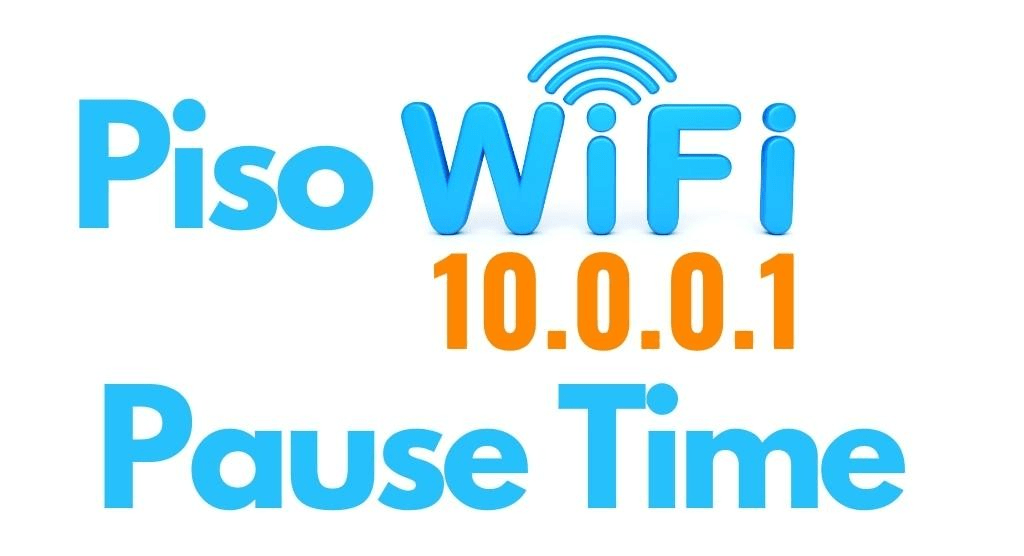Providing open WIFI access to the public is often a complicated task, especially for places like libraries, cafes, and retail outlets. One possible solution to this problem is 10.10 0.1 Piso WiFi pause that is very popular in the Philippines and elsewhere in the world. A Wi-Fi disabling function that is one of the features is very useful for both providers of the service and their customers. This post will be centered not only on the features, but on how to set up, activate, and stop the 10.10 0.1 Piso WiFi pause capabilities.
What is Piso WiFi 10.10 0.1?
Piso WiFi is a system in which users pay to utilize the internet. It is called so because of the Filipino coin with one peso. That 10.10 0.1 IP address plays a vital role in this system because by means of it administrators are able to administer the Piso WiFi network in many different ways. The interface 10.10 0.1 is the main hub for the entire WiFi experience as it oversees the pauses, consumption, and payments among others.
How to Set 10.10 0.1 Piso WiFi Pause Time?
A 10.10 0.1 Piso WiFi system’s pause time functionality can be optimized for network management by following these steps:
1. Access the Admin Panel: Launch a web browser and enter the IP address 10.10 0.1. This will show you the login page of the Piso WiFi control panel.
2. Login Credentials: The admin username and password which you received during setup must be given to grant you access to the admin dashboard.
3. Navigate to Pause Settings: Once you have logged in, locate WiFi pause or time control under settings or configuration section.
4. Set Pause Time: The pause feature allows you to select the amount of time the device will be disabled, from several minutes to a few hours, in line with user needs and network management rules.
5. Save Changes: remember to save your changes after adjusting the pause time in order to apply them properly on the Piso WiFi network.
Features Of Piso WiFi Pause Time
For better network administration and user experience, a 10.10 0.1 Piso WiFi system’s pause time functionality offers a wealth of features:
1. Scheduled Pauses: To interfere with the users not too often, administrators can set automatic pauses for certain periods of the day for instance when the company isn’t available or when the maintenance is needed.
2. Customizable Duration: Users have the opportunity to be flexible with their WiFi breaks based on their specific requirements and enabling optimal internet usage control.
3. Instant Activation: The stop time feature allows you to pause WiFi connection whenever necessary with just a few clicks, which is very important for prompt network management or security response.
4. Usage Monitoring: Another feature is the usage monitoring, which is available on some Piso WiFi systems. Therefore, managers have an opportunity to track trends, identify the best pause times and, overall, operate the network more effectively.
Benefits
There are a lot of advantages for both users and providers when pause time feature is implemented in a Piso WiFi network:
1. Control and Flexibility: The network administrators can effectively control the internet usage by the temporary halting of Wi-Fi network. This facilitates sharing of bandwidth evenly and avoids misuse or unauthorized access.
2. Improved User Experience: During high traffic periods, planned resumes can be activated to boost network performance and effect maintenance processes without affecting the user experience, thus contributing to the overall user satisfaction.
3. Cost Efficiency: Reducing the operational expenses associated with managing the network and conserving energy by turning off WiFi access during off-peak hours and inactive times ensures the long-term sustainability of the network.
4. Improved Security: The purposeful adaptation of temporary breaks can be a factor in reducing the dangers. These pausing moments can be used to prohibit access at times when there is a chance for susceptibility which includes periodically installing updates or patches, which ultimately boosts your network’s defenses.
How to Stop Piso WiFi?
In order to make sure that providers and users have a smooth transition when Piso WiFi services are discontinued, a methodical strategy is needed:
1. Announce Closure: Users must be notified ahead of time that Piso WiFi will be terminated. This will reduce inconvenience and give them sufficient time to make other travel plans.
2. Set End Date: Place a large announcement or notice on the login page to let users know that the Piso WiFi service will be disconnected on the specific day.
3. Ensure Customer Satisfaction by Refunding Deposits: If required, return the money to the customers who have paid for service in advance regardless of whether their internet is still active after the termination time.
4. Disable Network: In order to properly confine the system usage and adhere to discontinuation plan, log in into Piso WiFi admin interface and disable the network.
5. Remove Equipment:Where Piso WiFi equipment is owned or leased, establish collection or return arrangements with the provider in accordance with the terms of the agreement.
Conclusion
The 10.10 0.1 Piso WiFi pause feature is becoming an essential tool for administrators in the ever-changing world of public WiFi administration. It allows them to optimize network speed, improve user experience, and strengthen security. Providers are able to maintain flexibility and exact control over network consumption with this technology, which offers customized pause times, scheduled pauses, and quick activation possibilities.
The benefits of pausing time go beyond just being convenient; they also include saving money, being more efficient, and having better security. With the stop time feature in a Piso WiFi system, you can easily schedule maintenance windows, enforce fair usage standards, and prepare for network discontinuance. This allows for seamless management and operation, and the result is an improved WiFi experience for everyone involved.
Also Read: What is Psd Prior Approval & Why It Matters in Healthcare?











